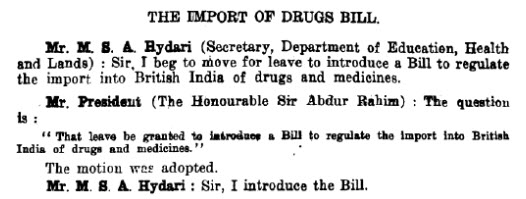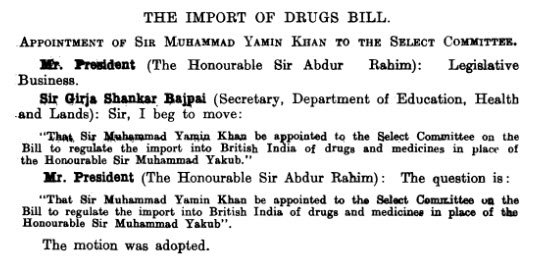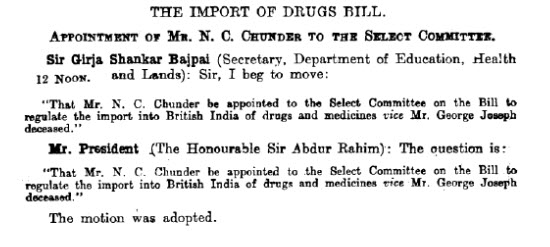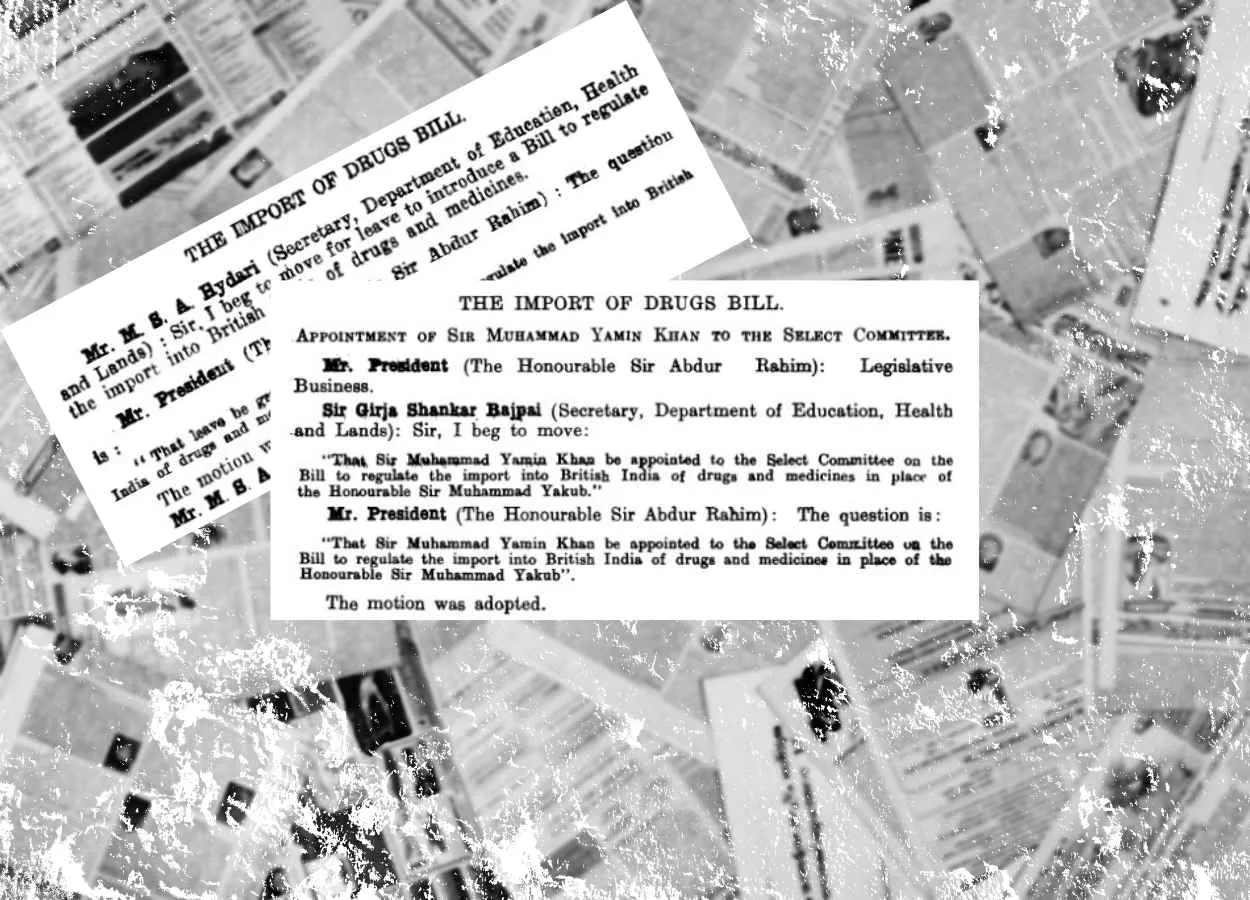 ABOUT AUTHOR
ABOUT AUTHOR
Dr. R. S. Thakur
Chief Editor, Journal of Pharmaceutical Research
Krupanidhi College of Pharmacy, Bengaluru, India.
Email : drramsthakur@gmail.com
Preamble
29th Match, 1931 is red-letter day for Pharmacists of India. It was on that day, The Drugs Enquiry Committee report was submitted to Government of India. On the basis of the recommendations of this one report, two central legislations came on the Statute book namely, The Drugs Act, 1940 (now The Drugs and Cosmetics Act, 1940) and the Pharmacy Act, 1948. The Drugs Enquiry Committee under the Chairmanship of Col. R. N. Chopra submitted a 436 page report comprising Part I- Report, spread over page 1-174 containing the details of Enquiry and the recommendations; and Part II- Appendices, spread over page 177-436 containing APPENDIX - A to APPENDIX- O.
Reference Id: PHARMATUTOR-ART-3001
Part I of the report is divided into seven Sections. The report dealt in both Drugs and Pharmacy in greater details including status within British India and the contemporary world. The committee made in-depth enquiry into drugs included in the British Pharmacopoeia; Known and approved medicinal preparations- (a) Non-official (General), (b) Biological products, (c) Organo-metallic compounds; Medicines made from indigenous drugs; Patent and Proprietary medicines; The profession of Pharmacy; development of the drug industry in India; Government Medical Stores Depots; Pharmacopoeia for India and Quinine policy.
Study of the report depicts scientific acumen with which the Enquiry was planned and executed by the committee with clear foresight to find out practical solutions for the pathetic state of affairs regarding standards and quality of medicines available in India and the non-existing pharmacy profession, hampering vigil over quality of medicines being imported and quality of medicines dispensed on the prescription of medical practitioners.
For the purpose of documented scientific enquiry the Committee circulated a questionnaire in four parts to receive written response and got overwhelming response from all quarters as revealed by the voluminous appendices from page 177-436. To ensure participation in the enquiry from all walks of life the questionnaire were divided in 4 sections to be answered by experts, special interests and lay public.
I. For Medical profession,
II. To be answered by importers and exporters,
III. To be answered by dispensing chemists, and
IV. General to be answered by all.
This meticulous planning reflected the objective of strong foundation for a monumental report and indeed it was a monumental report from every angle.
However, it took really very long time on the part of the Government of India to act on the report and fulfill the objectives for which the committee was constituted
Terms of Reference
While appointing the committee on 11th August, 1930, Government of India, Department of Education, Health and Lands [1], fixed the following terms of reference to the Committee :-
“(1) To enquire into the extent to which drugs and chemicals of impure quality or defective strength, particularly those recognized by the British Pharmacopoeia, are imported, manufactured or sold in British India, and the necessity in the public interest, of controlling such importation, manufacture and sale and to make recommendations;
(2) To report how far the recommendations made in (1) may be extended to known and approved medicinal preparations other than those referred to above, and to medicines made from indigenous drugs and chemicals; and
(3) To enquire into the necessity of legislation to restrict the profession of pharmacy to duly qualified persons, and to make recommendations.”
Summary of Recommendations
The summary of recommendations [1] is covered from page 158-171 under the headings:
(1) British Pharmacopoeial drugs and well-known and approved medicines. (Paragraph 403 to 428)
(2) Profession of pharmacy. (Paragraph 429 to 446)
(3) Patent and Proprietary medicines. (Paragraph 447 to 461)
(4) Medicines made from indigenous drugs. (Paragraph 462 to 465)
(5) Development of the drug industry in India. (Paragraph 466 to 477)
(6) Government Medical Stores Depot. (Paragraph 478 to 480)
(7) Indian Pharmacopoeia. (Paragraph 481 to 484)
(8) Quinine policy. (Paragraph 485 to 487)
The following four preliminary recommendations [1] are worth mentioning here as these relate to one report leading to two Central Acts.
“399. There should be legislation to control drugs and pharmacy. The control in respect of drug's should be for those included in the British Pharmacopoeia and other known and approved medicinal preparations, whether indigenous or not. 400. Legislation should be central with a view to secure effectiveness and uniformity in control throughout India, 401. Legislation should not be combined with that for foods as the control in respect of the latter should be Provincial, in view of the varying needs of the different provinces. 402. Legislation may consist of either a. combined Drugs and Pharmacy Act, or a separate Drugs Act and a separate Pharmacy Act.”
Slow and Tardy Action
Although, the report was submitted to the Government of India on 29th March 1931, there was no visible measure taken until 23rd August, 1937 when the Import of Drugs Bill was introduced in the Legislative Assembly [2] as depicted below:

On 7th October, 1937 the Legislative Assembly referred the Import of Drugs Bill to a Select Committee [3] by the following motion:

On 2nd February, 1938 composition of the Select Committee was changed [4] by appointment of Sir Muhammad Yamin Khan to the Select Committee, in place of Sir Muhammad Yakub.

On 21st March, 1938 composition of the Select Committee was once again changed [5] by appointment of Mr. N. C. Chunder to the Select Committee vice Mr. George Joseph deceased.

The report of the Select Committee was presented to the Legislative Assembly on 13th September, 1938 [6] by Sir Girja Shankar Bajpai, Secretary, Department of Education Health and Lands.

The Select Committee reported that the original Bill be not proceeded with and that the Provincial Legislatures be asked to authorise the Central Legislature to enact legislation which would have the effect of regulating not merely the imports of drugs from abroad but also the manufacture and distribution of drugs in this country.
The Drugs Bill, 1940
On 6th February, 1940 the Drugs Bill, 1940 was introduced by Sir Girja Shankar Bajpai, Secretary, Department of Education Health and Lands. [7]

On 12th February, 1940 the Drugs Bill [8] was referred to a Select Committee to report on or before 1st March, 1940.

On 6th March, 1940 the Select Committee was given extension of time to report by 15th March, 1940. [9]
Finally on 4th April, 1940 the Bill to regulate the import, manufacture, distribution and sale of drugs, as reported by the Select Committee came for consideration of the Legislative Assembly as mover by Sir Girja Shankar Bajpai, Member for Education Health and Lands. The legislatures who participated in the debate included Lt. Col. Henry A John Gidney, Dr. R. D. Dalal, Mr. J. D. Boyle, Dr. P. N. Banerjee, Maulana Zafar Ali Khan, Lt. Col. M. A. Rahman, Pandit Lakshmi Kant Maitra, but the debate could not conclude till 5.00 p.m. on that day and the Assembly then adjourned till Eleven of the Clock on Friday, the 5th April, 1940. The debate resumed on 5th April, 1940 beginning with Pandit Lakshmi Kant Maitra who could not conclude on previous day. Another member who participated in the debate on 5th April, 1940 included Dr. Sir Ziauddin Ahmad and finally the Honourable Sir Girja Shankar Bajpai replied at 12.00 Noon.
The bill was then considered clause by clause and several amendments from members were taken up for consideration. After devoting almost two business days on debate and proposed amendments, the Drugs Bill as amended was passed by the Legislative Assembly on 5th April, 1940.
It received assent of the Governor General on 10th April, 1940 and became The Drugs Act, 1940 (XXIII of 1040). The original Act of 1940 is available in a combined volume of all the 52 Acts of 1940. [11]
The second Central Act that emanated from the recommendations of the Drugs Enquiry Committee is Pharmacy Act, 1948 (VIII of 1948) that came almost 8 years after the Drugs Act, 1940. The Pharmacy Bill was passed by the Constituent Assembly (Legislative) on 5th February, 1948 and received assent of the Governor General on 4th March, 1948. Thus both the Drugs Bill and the Pharmacy Bill were passed by the legislature on 5th day of the month of their passing. What a coincidence!
References
1. Report of the Drugs Enquiry Committee, 1930-31. Printed by The Superintendent, Government Press, and Published by The Government of India, Central Publication Branch, Calcutta. Page 3-4.
2. The Legislative Assembly Debates. Official Report Volume IV, 1937 (23rd August to 1st September, 1937) Sixth Session of the Fifth Legislative Assembly, 1937. Monday, 23rd August, 1937. Page 367.
3. The Legislative Assembly Debates. Official Report Volume VII, 1937 (30th September to 7th October, 1937) Sixth Session of the Fifth Legislative Assembly, 1937. Thursday, 7th October, 1937. Page 3211-3214.
4. The Legislative Assembly Debates. Official Report Volume I, 1938 (31st January to 22nd February,1938) Seventh Session of the Fifth Legislative Assembly, 1938. Wednesday, 2nd February, 1938. Page 247.
5. The Legislative Assembly Debates. Official Report Volume II, 1938 (23rd February to 23rd March, 1938) Seventh Session of the Fifth Legislative Assembly, 1938. Monday, 21st March, 1938. Page 1897.
6. The Legislative Assembly Debates. Official Report Volume VI, 1938 (12th September to 20th September, 1938) Eighth Session of the Fifth Legislative Assembly, 1938. Tuesday, 13th September, 1938. Page 2317.
7. The Legislative Assembly Debates. Official Report Volume I, 1940 (6th February to 5th March, 1940) Eleventh Session of the Fifth Legislative Assembly, 1940. Tuesday, 13th September, 1940. Page 85.
8. The Legislative Assembly Debates. Official Report Volume I, 1940 (6th February to 5th March, 1940) Eleventh Session of the Fifth Legislative Assembly, 1940. Monday, 12th February, 1940. Page 330.
9. The Legislative Assembly Debates. Official Report Volume II, 1940 (6th March to 26th March, 1940) Eleventh Session of the Fifth Legislative Assembly, 1940. Wednesday, 6th March, 1940. Page 980-987.
10. The Legislative Assembly Debates. Official Report Volume III, 1940 (27th March to 6th April, 1940) Eleventh Session of the Fifth Legislative Assembly, 1940. Thursday, 4th April, 1940. Page 2166-2204 and Friday 5th April, 1940 page 2206-2252.
11. A Collection of the Acts of The Central Legislature and of the Governor General for the year 1940 Published by The Manager of Publications, Delhi. Printed by The Manager, Government of India press, New Delhi, 1941, page 191-217.









